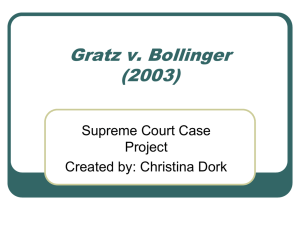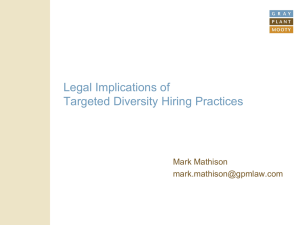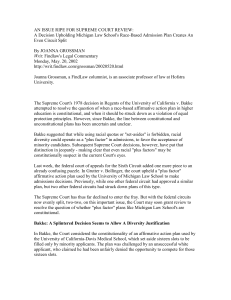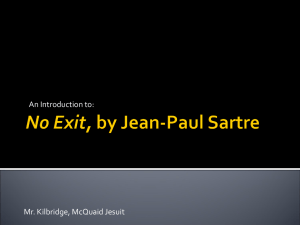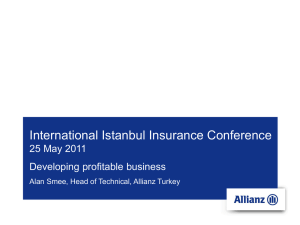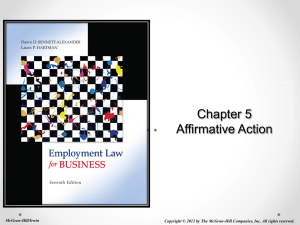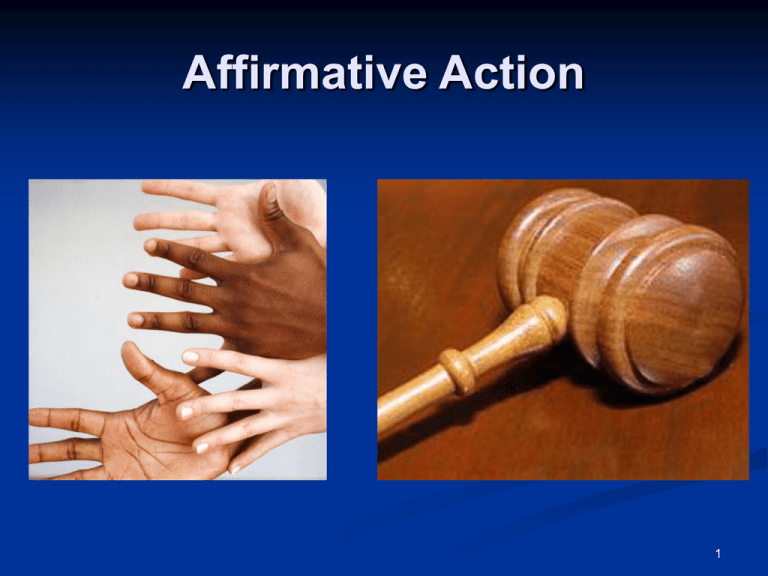
Affirmative Action
1
John F. Kennedy: Executive
Order 10925 (1961)
Used affirmative action
for the first time by
instructing federal
contractors to take
"affirmative action to
ensure that applicants are
treated equally without
regard to race, color,
religion, sex, or national
origin."
Established the
President’s Committee on
Equal Employment
Opportunity
2
Civil Rights Act (1964)
Landmark legislation prohibiting employment
discrimination by large employers
Established the Equal Employment Opportunity
Commission (EEOC)
3
Lyndon B. Johnson: Executive
Order 11246 (1965)
Required all government
contractors and
subcontractors to take
affirmative action to
expand job opportunities
for minorities
Established Office of
Federal Contract
Compliance (OFCC) in
the Department of Labor
Amended in 1967 to
expand employment
opportunities for women
4
Richard M. Nixon: Executive
Order 11625 (1971)
Directed federal
agencies to develop
comprehensive plans
and specific program
goals for a national
Minority Business
Enterprise (MBE)
contracting program
5
Regents of the University of
California v. Bakke (1978)
Allan Bakke applied twice for admission to the University of
California Medical School and was rejected both times.
The school reserved 16 places in each entering class of 100 for
"qualified" minorities, as part of the university's affirmative action
program.
Bakke's qualifications exceeded those of any of the minority
students admitted.
Bakke contended that he was excluded from admission solely on the
basis of race.
6
Regents of the University of
California v. Bakke (1978)
Did the University of California violate the Fourteenth Amendment's
equal protection clause, and the Civil Rights Act of 1964, by
practicing an affirmative action policy that resulted in the repeated
rejection of Bakke's application for admission to its medical school?
The Supreme Court upheld the use of race as one factor in choosing
among qualified applicants for admission. It also ruled unlawful the
University Medical School's practice of reserving seats in each
entering class for disadvantaged minority students.
7
Jimmy Carter: Executive Order
12138 (1979)
Created a National
Women's Business
Enterprise Policy and
requiring each agency
to take affirmative
action to support
women's business
enterprises
8
United Steelworkers of America
v. Weber (1979)
The United Steelworkers of America and the Kaiser Aluminum and
Chemical Corporation implemented an affirmative action-based
training program to increase the number of the company's black
skilled craft workers.
Half of the eligible positions in the training program were reserved
for blacks.
Weber, who was white, was passed over for the program. Weber
claimed that he was the victim of reverse discrimination.
9
United Steelworkers of America
v. Weber (1979)
Did United and Kaiser Aluminum's training scheme violate Title VII of
the 1964 Civil Rights Act prohibiting discrimination on the basis of
race?
The Supreme Court ruled that race-conscious affirmative action
efforts designed to eliminate a conspicuous racial imbalance in an
employer's workforce resulting from past discrimination are
permissible if they are temporary and do not violate the rights of
white employees.
10
President Ronald Regan:
Executive Order 12432 (1983)
Directed each federal
agency with
substantial
procurement or grant
making authority to
develop a Minority
Business Enterprise
(MBE) development
plan.
11
Local 28 v. EEOC 478 U.S. 421
(1986)
In 1975, a federal district court found the Local 28 of the Sheet Metal
Workers Union guilty of racial discrimination in violation of Title VII of
the Civil Rights Act of 1964.
The court established a 29 percent minority membership goal and
ordered the union to implement procedures to meet the goal. In
1982 and 1983, the union was found guilty of civil contempt for
disobeying the court orders.
The court then established a 29.23 percent nonwhite membership
goal to be met by August 1987.
12
Local 28 v. EEOC 478 U.S. 421
(1986)
Did provisions of Title VII of the Civil Rights Act of 1964
empower courts to order race-conscious membership
quotas?
The Supreme Court upheld a judicially-ordered 29%
minority "membership admission goal" for a union that
had intentionally discriminated against minorities,
confirming that courts may order race- conscious relief to
correct and prevent future discrimination.
13
Johnson v. Transportation
Agency 480 U.S. 616 (1987)
14
Johnson v. Transportation
Agency 480 U.S. 616 (1987)
15
Johnson v. Transportation
Agency 480 U.S. 616 (1987)
The Transportation
Agency, Santa Clara,
California promoted
Diane Joyce to road
dispatcher over Paul
Johnson.
Both candidates were
qualified for the job.
As an affirmative action
employer, the Agency
took into account the sex
of the applicants in
making the promotion
decision.
16
Johnson v. Transportation
Agency 480 U.S. 616 (1987)
Did the Agency impermissibly take into account the sex
of the applicants in the promotion process and violate
Title VII of the Civil Rights Act of 1964?
The Supreme Court ruled that a severe under
representation of women and minorities justified the use
of race or sex as "one factor" in choosing among
qualified candidates.
17
Richmond v. J.A. Croson Co. 488
U.S. 469 (1989)
In 1983, the City Council
of Richmond, Virginia
adopted regulations that
required companies
awarded city construction
contracts to subcontract
30 percent of their
business to minority
business enterprises.
The J.A. Croson
Company, which lost its
contract because of the
30 percent set-aside,
brought suit against the
city.
18
Richmond v. J.A. Croson Co. 488
U.S. 469 (1989)
Did the Richmond law violate
the Equal Protection Clause of
the Fourteenth Amendment?
The Supreme Court struck
down Richmond's minority
contracting program as
unconstitutional, requiring that
a state or local affirmative
action program be supported
by a "compelling interest" and
be narrowly tailored to ensure
that the program furthers that
interest.
19
Adarand Constructors v. Pena
515 U.S. 200 (1995)
20
Adarand Constructors v. Pena
515 U.S. 200 (1995)
21
Adarand Constructors v. Pena
515 U.S. 200 (1995)
Adarand, submitted the lowest bid as a subcontractor for part of a project
funded by the U.S. Dept. of Transportation.
Under the terms of the federal contract, the prime contractor would receive
additional compensation if it hired small businesses controlled by "socially and
economically disadvantaged individuals." [The clause declared that "the
contractor shall presume that socially and economically disadvantaged
individuals include Black Americans, Hispanic Americans, Native Americans,
Asian Pacific Americans, and other minorities...." ]
Another subcontractor, Gonzales Construction Company, was awarded the
work. It was certified as a minority business; Adarand was not.
The prime contractor would have accepted Adarand's bid had it not been for
the additional payment for hiring Gonzales.
22
Adarand Constructors v. Pena
515 U.S. 200 (1995)
Is the presumption of disadvantage based on race alone,
and consequent allocation of favored treatment, a
discriminatory practice that violates the Fifth
Amendment's Equal Protection Clause?
The Supreme Court held that a federal affirmative action
program remains constitutional when narrowly tailored to
accomplish a compelling government interest such as
remedying discrimination.
23
President William Clinton: “Mend
it, Don’t End it” (July 1995)
President Clinton delivered this
major speech in defense of
Affirmative Action programs at
the National Archives.
“I am absolutely convinced that
we cannot restore economic
opportunity or solve our social
problems unless we find a way
to bring the American people
together. And to bring our
people together we must
openly and honestly deal with
the issues that divide us. “
“We should reaffirm the
principle of affirmative action
and fix the practices. We
should have a simple slogan:
Mend it, but don't end it.”
24
Equal Opportunity Act of 1995
Senator Robert Dole
and Representative
Charles Canady
introduced the socalled Equal
Opportunity Act in
Congress.
The act would prohibit
race- or genderbased affirmative
action in all federal
programs.
25
Grutter v. Bollinger 539 U.S. 306
(2003)
26
Grutter v. Bollinger 539 U.S. 306
(2003)
27
Grutter v. Bollinger 539 U.S. 306
(2003)
In 1997, Barbara Grutter, applied for
admission to the University of Michigan Law
School.
Grutter applied with a 3.8 undergraduate GPA
and an LSAT score of 161. She was denied
admission.
The Law School admits that it uses race as a
factor in making admissions decisions
because it serves a "compelling interest in
achieving diversity among its student body."
The District Court concluded that the Law
School's stated interest in achieving diversity
in the student body was not a compelling one
and enjoined its use of race in the admissions
process.
In reversing, the Court of Appeals held that
Justice Powell's opinion in Regents of the
University of California v. Bakke, constituted a
binding precedent establishing diversity as a
compelling governmental interest sufficient
under strict scrutiny review to justify the use of
racial preferences in admissions.
28
Grutter v. Bollinger 539 U.S. 306
(2003)
Does the University of Michigan
Law School's use of racial
preferences in student admissions
violate the Equal Protection
Clause of the Fourteenth
Amendment or Title VI of the Civil
Rights Act of 1964?
The Supreme Court held that the
University of Michigan’s use of
race among other factors in its law
school admissions program was
constitutional because the
program furthered a compelling
interest in obtaining “an
educational benefit that flows from
student body diversity”.
The Court also found that the law
school’s program was narrowly
tailored; it was flexible, and
provided for a “holistic” review of
each applicant.
29
Gratz v. Bollinger 539 U.S. 244
(2003)
30
Gratz v. Bollinger 539 U.S. 244
(2003)
31
Gratz v. Bollinger 539 U.S. 244
(2003)
In 1995, Jennifer Gratz applied to
the University of Michigan's
College of Literature, Science and
the Arts with an adjusted GPA of
3.8 and ACT score of 25.
She was denied admission and
attended another school.
The University admits that it uses
race as a factor in making
admissions decisions because it
serves a "compelling interest in
achieving diversity among its
student body."
In addition, the University has a
policy to admit virtually all qualified
applicants who are members of
one of three select racial minority
groups - African Americans,
Hispanics, and Native Americans that are considered to be
"underrepresented" on the
campus.
32
Gratz v. Bollinger 539 U.S. 244
(2003)
Does the University of
Michigan's use of racial
preferences in undergraduate
admissions violate the Equal
Protection Clause of the
Fourteenth Amendment or Title
VI of the Civil Rights Act of
1964?
The Supreme Court handed
down its decision and rejected
the undergraduate admissions
program at the College of
Literature, Science and the
Arts, which granted points
based on race and ethnicity
and did not provide for a
review of each applicant’s
entire file.
33
Multimedia Citation
Slide 1: http://www.providence.edu/polisci/students/affirmative_action/Images/hands.jpg
http://www.providence.edu/polisci/students/affirmative_action/Images/gavel.jpg
Slide 2: http://www.cia.gov/csi/monograph/firstln/955pres24.gif
Slide 3: http://www.lbjlib.utexas.edu/johnson/av.hom/images/276-10-64.JPG
Slide 4: http://www.ee.princeton.edu/~jay/lbj.jpg
Slide 5: http://www.cia.gov/csi/monograph/firstln/955pres32.gif
Slide 6 - 7: http://www.cnn.com/US/9908/10/affirmative.action/link.bakke.jpg
Slide 8: http://www.cia.gov/csi/monograph/firstln/955pres42.gif
Slide 9 - 10: http://www.oyez.org/oyez/resource/case/423/participants
Slide 11: http://www.reagan.utexas.edu/archives/photographs/large/c30228.jpg
Slide 12 - 13: http://www.smwialu28.org/index28.html
Slide 14 – 17: http://www.maxwell.syr.edu/plegal/scales/santaclaravis.html
Slide 18 - 19: http://www.nunes.house.gov/photos/Supreme_Court.jpg
Slide 20 - 23: http://www.maxwell.syr.edu/plegal/scales/adarand.gif
Slide 24: http://lcweb2.loc.gov/pnp/cph/3c00000/3c07000/3c07700/3c07700r.jpg
Slide 25: http://veterans.house.gov/benefits/gi60th/images/bobdole3.jpg
http://www.cnn.com/ALLPOLITICS/stories/1999/02/12/post.vote.reax/canady.jpg
Slide 26 - 27:http://www.maxwell.syr.edu/plegal/scales/grutter.gif
Slide 28 – 29: http://media.collegepublisher.com/media/paper255/stills/11t1tz99.jpg
Slide 30 - 31: http://www.maxwell.syr.edu/plegal/scales/gratz.gif
Slide 32 – 33: http://media.michigandaily.com/vimages/shared/vnews/stories/41e3bbfd2ea37-44-1.jpg
34

